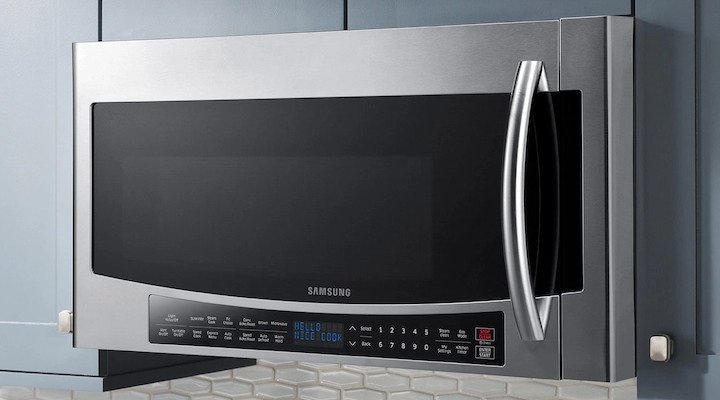
Now, you might be wondering, “Why can’t my microwave just tell me what’s wrong in plain English?” Well, it all comes down to the language of technology. These codes are designed to be universal, offering a shorthand for common problems that a service technician or someone with a little guidance can decipher. The “F1” error isn’t just popping up to annoy you—it’s actually doing you a favor by pinpointing where the issue lies, so you can either fix it yourself or know exactly what to tell a repair person.
Understanding the F1 Error Code
When your Samsung microwave displays the “F1” error code, it’s essentially telling you there’s a problem with the touchpad or the control board. Think of it like your smartphone’s touchscreen acting up. If your phone’s screen doesn’t respond, it becomes pretty challenging to send a text or scroll through cat videos. Similarly, if the microwave’s touchpad isn’t detecting your commands correctly, it’s going to have trouble doing its job.
The control board is like the brain of your microwave. It’s responsible for executing the commands you give through the touchpad. If there’s a glitch or malfunction, the “F1” code serves as a signal that something isn’t right in this communication line. It’s a bit like playing telephone but where the message gets garbled along the way. This could be due to wear and tear, electrical surges, or even just a simple manufacturing defect.
So, what should you do when you see this code? First, don’t panic. The appliance isn’t going to explode or anything dramatic. Start by trying to reset the microwave. Unplug it for a few minutes and then plug it back in. It’s the classic “turn it off and on again” trick—yes, even microwaves can benefit from a fresh start!
Common Causes of the F1 Error
You might be curious about what causes this mysterious “F1” error to materialize. There are several factors that could be at play, and understanding these can help prevent it in the future. One major cause is a faulty touchpad. Over time, after countless presses, the touchpad can start to wear down. Imagine pressing the same key on a piano repeatedly—eventually it might start to stick or not produce sound at all.
Another culprit could be the control board itself. As the hub of all electronic operations in your microwave, if it experiences any electrical issues—perhaps due to a power surge or just aging components—it may not function as it should. It’s akin to a computer’s motherboard short-circuiting; without proper function, everything connected to it can go haywire.
Lastly, environmental factors can also contribute. Microwaves are often installed in kitchens where they can be exposed to steam, grease, and dust. This concoction can potentially infiltrate the delicate electronic parts of your microwave, leading to glitches. Keeping your appliance clean and in a well-ventilated space can help mitigate these risks.
Steps to Address the F1 Error
Now that you have a better understanding of what might cause the “F1” error, let’s talk about how you can tackle it. If resetting the microwave didn’t work, you may need to get a bit more hands-on. The first step is to check the touchpad. Sometimes, cleaning it with a slightly damp, non-abrasive cloth can solve the problem, especially if it’s just a matter of dirt or grease interfering with the touch sensitivity.
If a simple cleaning doesn’t do the trick, it’s worth inspecting the electrical connections. Make sure everything is snugly in place, and nothing looks burnt or damaged. Working with electrical appliances can be tricky, so if you’re not comfortable, it might be best to call a professional at this point.
For those feeling adventurous, replacing the touchpad or control board is the next step. There are plenty of online guides and tutorials that can walk you through the process. However, consider the age and cost of your microwave; sometimes, investing in a new unit makes more sense.
Preventive Measures and Final Thoughts
Prevention, as they say, is better than cure. To avoid encountering the “F1” error in the future, regular maintenance of your microwave is key. Clean it thoroughly but gently, and inspect the electrical cords and connections now and then for any signs of wear or damage. Keeping your kitchen appliances in a dry, well-ventilated space will also help extend their lifespan.
If you notice recurring issues, document them. Patterns can help service technicians diagnose the problem faster and more accurately. Sometimes, frequent errors could be a sign that it’s time to consider a new microwave altogether, especially if repairs start to outweigh the cost of replacement.
In the end, while the “F1” error code might seem daunting at first, it’s really just your microwave’s way of asking for a bit of attention. By understanding what it means and how to deal with it, you can keep your trusty kitchen companion running smoothly for years to come. If all else fails, seeking professional help is always a wise choice—it ensures safety and peace of mind.